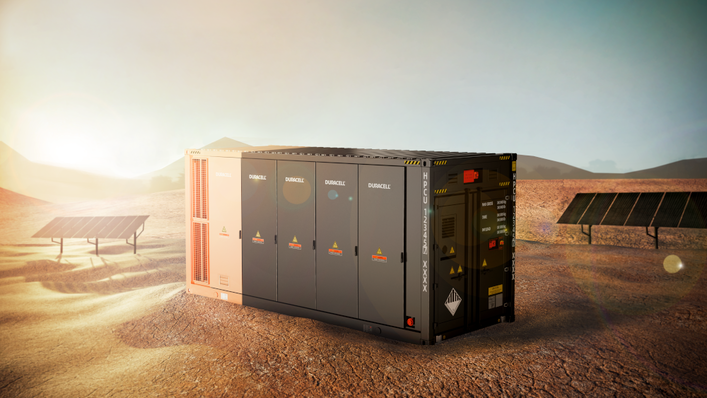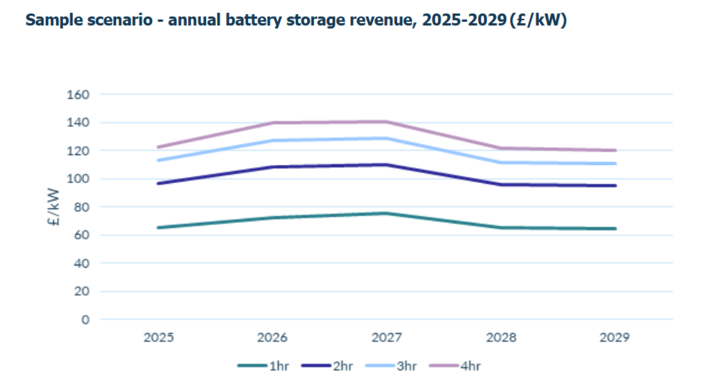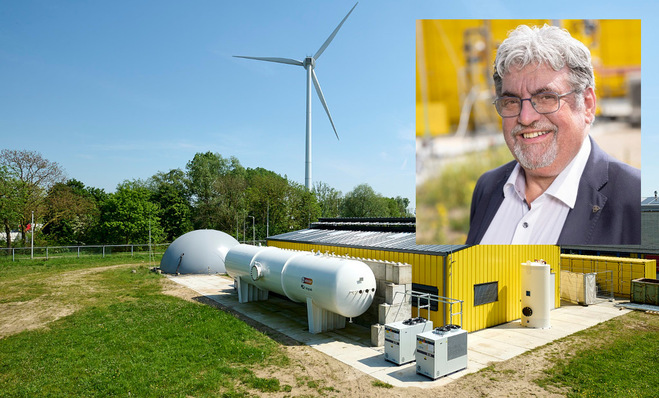Demand for solar storage has been growing rapidly for a number of years now. Will string and battery inverters merge into a single unit?
Volker Wachenfeld: From a global perspective, hybrid inverters are a concept that is spreading deep into some markets. Take Australia, for example: Batteries have gone through a dynamic development. But combining the functionalities for PV and batteries into one unit may not always make sense. Functions such as emergency power or the spatial separation of PV and the battery may speak in favour of keeping systems separate.
Jürgen Reinert: Solar inverters and battery storage are moving closer together – but that does not mean that they have to merge completely. After all, storage has by now penetrated all segment of the solar market, from small domestic batteries to large containers for solar parks. It is all about integrating them in a way that is the smartest and most useful for the customers and the power grid.
What are the advantages of the various system concepts?
Volker Wachenfeld: Combined systems with DC-connected batteries can for instance make sense for megawatt-scale solar parks. Imagine you want to retrofit an existing solar park with a storage unit without raising the connected output at the point of connection to the grid. In the US, this is currently a common solution. Generally, however, AC-connection is surely the better concept for retrofitting. The storage system can be integrated at any convenient location. Battery and battery inverter are always well-coordinated this way.
Is the battery voltage important?
Volker Wachenfeld: Low-voltage batteries at 48 volts will not go away. Since 2017, we have been offering high-voltage storage at 400 volts and above. That saves money for the power electronics, but it also means larger battery cells. The typical capacity of EV battery cells has gone up from 40 to 60 ampere hours to now 100 to 130 ampere hours. This allows you to connect fewer cells in series, which also keeps the voltage lower.
Jürgen Reinert: Also, do not forget: Globally speaking, lead storage is still very prevalent. And those are exclusively all 48-volt systems, i.e. low-voltage storage units.
How high can the voltages for batteries go?
Volker Wachenfeld: For large-scale storage systems, the battery voltage can reach 1,350 volts, for instance in the container units by Korean manufacturers. That works well with inverters that provide the power from the panel array at 1,500 volts. When connecting the battery into the DC-side, a battery voltage around 1,000 volts is more suitable as it makes it possible to use more cost-effective topologies.
When are hybrid systems more advantageous?
Jürgen Reinert: I see the advantages mostly in smaller newly built units with a definite battery capacity throughout their lifespan. If the storage unit is to be extendable, separate systems are more suitable. In that case, retrofitting the PV inverter and the battery would be more flexible. It is like this: There are these washer/dryer combinations in one unit. But in spite of the space savings and lower cost, these have not caught on. This is because they are always a compromise: They neither wash nor dry as well as either of the separate units. The flexibility of use clearly speaks in favour of separate systems.
How much inverter output for storage systems did SMA sell last year?
Volker Wachenfeld: In 2017, we have provided the power electronics to control about 400 megawatts of storage output. One large installation in the UK alone has a capacity of 60 megawatt hours. England now has a total of about 500 megawatt hours of storage capacity, including a number of large containers with between one and five megawatt hours. These include the battery racks, fire-fighting equipment, cooling for the racks and the power electronics for connecting the DC battery.
Jürgen Reinert: These units are installed at crucial points of the power grid to take the strain off the outdated grid infrastructure. In the UK, these storage containers also act as a capacity reserve for large industrial consumers to protect them from shortages in the grid.
Is primary balancing power still a factor when it comes to refinancing storage systems?
Volker Wachenfeld: To that end, Germany has added between 50 and 60 megawatt hours of battery capacity in 2017. The prices for balancing power continue to fall, which is why peak shaving on the customer’s side of the metre is becoming more important. However, the battery system then needs to be adapted to their load profiles.
How important is electric mobility for the storage market?
Jürgen Reinert: If charging an EV at 150 kilowatts DC is desired, capacity reserves in the form of storage batteries make sense. But no one is willing to pay for the necessary development of the grid. Bi-directional charging still has some time to mature, especially when it comes to offsetting the cost. After all, it impacts the service life of EV batteries.
Volker Wachenfeld: 150 to 200 kilowatts are currently the upper limit for rapid charging. 350 kilowatts will come, but the cars will also need to be able to take it. If very high outputs are required for charging EVs as fast as possible, stationary storage may provide very cost-effective solutions. For instance, if the battery is capable of producing 600 watts for a short period, it may have a clear cost advantage over a grid connection with the same output.
When it comes to cost-effectiveness, the price of the lithium cells is a key factor. How would you evaluate that development for the coming weeks and months?
Jürgen Reinert: Over the course of only a few years, prices have fallen from 1,000 euros per kilowatt hour to 200 euros per kilowatt hour for large storage systems. Currently, the delivery period for lithium cells is at six to 12 months, which slows down a further fall in prices. Various giga-factories are being planned to raise the production capacities, but that will take some time. In the coming ten years we are expecting cell prices to come down by another 50 percent.
Volker Wachenfeld: We know from semiconductors that long delivery periods result in stabilising prices. And when one technology, such as lithium, becomes scarce, others may have a chance. This might result in larger-capacity units to be increasingly fitted with lead cells. These only have half the service life of a lithium battery, and only half of the nominal capacity can be used. So compared to lithium, it would require four times the capacity – and thus a lead cell can only cost as much as 50 euros per kilowatt hour.
What about redox-flow batteries, how promising is this technology?
Volker Wachenfeld: For smaller applications, they are too expensive and complicated. Redox-flow systems are economical, if higher storage capacities and longer storage periods are needed. The larger the battery system, the more suitable is redox flow.
Jürgen Reinert: What is clear, however, is that even if lead batteries might be going through a little, short-term revival, lithium has won the race.
Talking of prices: How is the price pressure for solar inverters developing?
Jürgen Reinert: The Chinese have announced that they will cut their domestic PV market. If this actually happens, there will also be overcapacities for inverters. So far, the decline in prices has been around five to 15 percent per year. We will have to see where the markets will go in the coming months. (HS)
Watch our PV Guided Tour on energy storage and solar batteries.
Stay informed, get our newsletter twice a week. Register here.
Read more about solar modules.
Read more about solar mounting systems.
Read more about solar energy storage.







